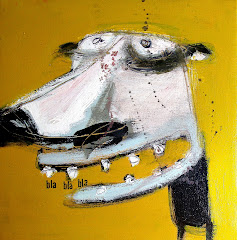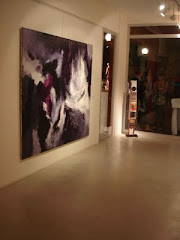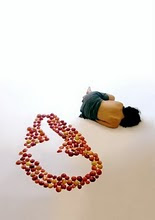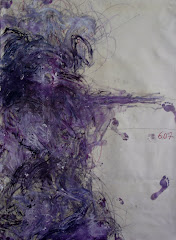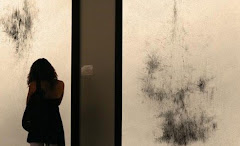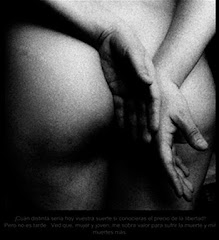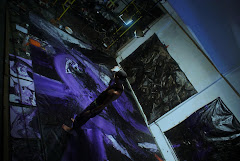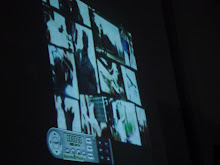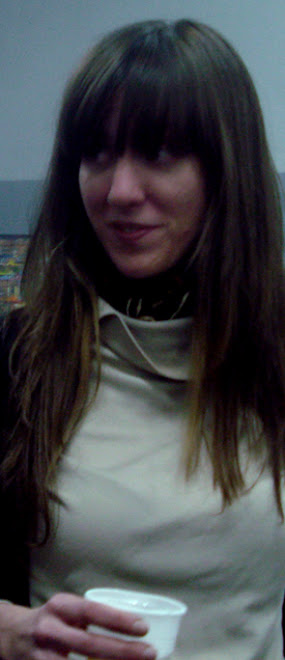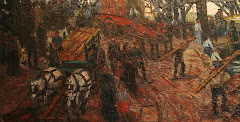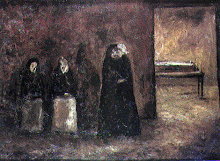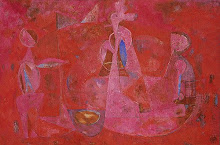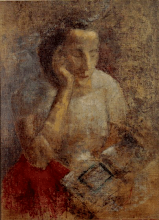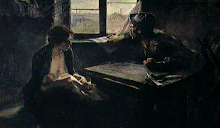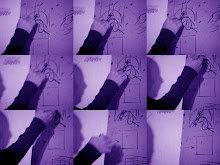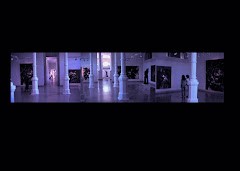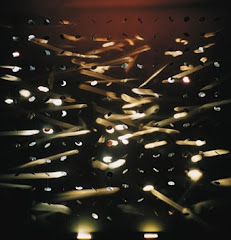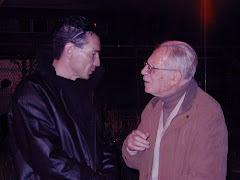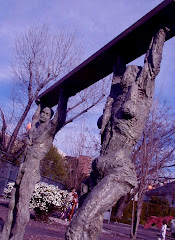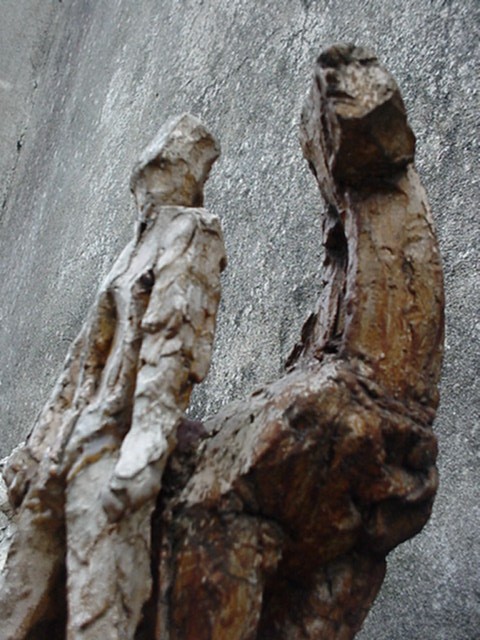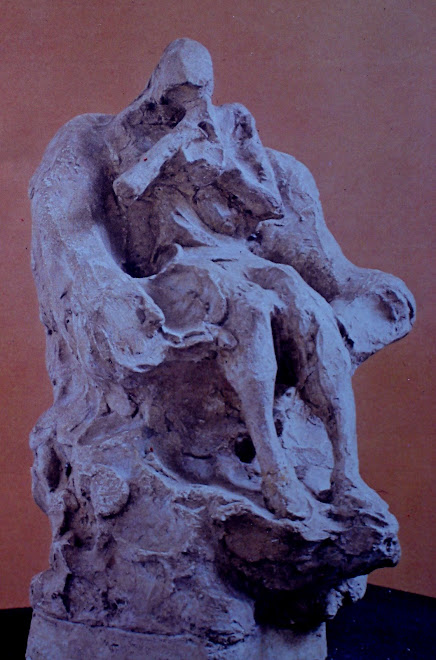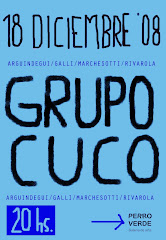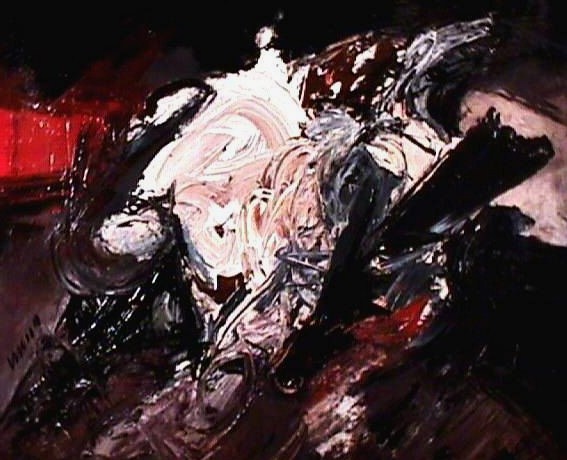

ADVERTENCIA + NOTA DEL EQ-GC :
Arriba : Foto de Gustavo FARES > GUILLERMO CUELLO TRABAJANDO EN DAURA MUSEUM / VA / USA .
.
.
.
.
Este Blog contiene imágenes de desnudos artísticos, estéticos (no pornográficos). Se trata de modelos y performers trabajando en acciones específicas reconocidas en el Ambiente del Arte, Nacional e Internacional . No se recomienda a personas impresionables - y en el caso de menores - queda a disposición de sus padres juzgar, autorizar o no la visita al mismo, como al resto de blog asociados digitalmente con éste, a saber :
http://www.guillermocuello.blogspot.com/
(+ los de la Retrospectiva Digital " Cuerpos en Interfases")
&
http://www.gcequipo.blogspot.com/ (Blog I - INICIO )
y
Los blog señalados en la sidebar.
NOTA : se recomienda a los alumnos, utilizar el buscador interno de este blog, para estudiar temas como Técnicas Mixtas ; el Oleo ; el Acrílico ; la Forma etc. , o ingresar por NOTAS - APUNTES + "Entradas Antiguas" .
MUCHAS GRACIAS POR SU ATENCION.
.
.
.
.
Este Blog contiene imágenes de desnudos artísticos, estéticos (no pornográficos). Se trata de modelos y performers trabajando en acciones específicas reconocidas en el Ambiente del Arte, Nacional e Internacional . No se recomienda a personas impresionables - y en el caso de menores - queda a disposición de sus padres juzgar, autorizar o no la visita al mismo, como al resto de blog asociados digitalmente con éste, a saber :
http://www.guillermocuello.blogspot.com/
(+ los de la Retrospectiva Digital " Cuerpos en Interfases")
&
http://www.gcequipo.blogspot.com/ (Blog I - INICIO )
y
Los blog señalados en la sidebar.
NOTA : se recomienda a los alumnos, utilizar el buscador interno de este blog, para estudiar temas como Técnicas Mixtas ; el Oleo ; el Acrílico ; la Forma etc. , o ingresar por NOTAS - APUNTES + "Entradas Antiguas" .
MUCHAS GRACIAS POR SU ATENCION.


12.10.09
12 DE OCTUBRE (II)
.
.
.
Latin American Visual Art :
Independence to the Present
FUENTE : GUSTAVO FARES
(Artista Invitado-Asociado al EQUIPO - GC )
faresg@lawrence.edu
Required Texts
Handouts in reserve at Library
Images are available @: U:\Class_Share\spanish\SPAN576
Recommended TextsTate Glossary: http://www.tate.org.uk/collections/glossary/
Bibliography
Ades, Dawn. Art in Latin America: the modern era, 1820-1980. Haven: Yale University Press, 1989.
Amador Gómez-Quintero, Raysa Elena and Mireya Pérez Bustillo. The female body: perspectives of Latin American artists. Westport, Conn.: Greenwood Press, 2002.
Baddeley, Oriana and Valerie Fraser. Drawing the line: art and cultural identity in contemporary Latin America. London; New York: Verso, 1989.
Barnitz, Jacqueline. Twentieth-century art of Latin America. Austin: University of Texas Press, 2001.
Bethell, Leslie. A cultural history of Latin America: literature, music, and the visual arts in the 19th and 20th centuries. Cambridge; Cambridge University Press, 1999.
Cockcroft, James D. y Jane Canning Latino Visions: Contemporary Chicano, Puerto Rican, and Cuban American Artists. New York: Franklin Watts, 2000.
Fletcher, Valerie. Crosscurrents of Modernism. Four Latin American Pioneers. Diego Rivera, Joaquín Torres García, Wilfredo Lam, Matta. Washington, D.C.: Hishhorn Museum, 1992.
Gutiérrez, Ramón, and Rodrigo Gutiérrez Viñuales. Historia del arte iberoamericano. España: Lunwerg, 2000.
Lindsay, Arturo. Santería aesthetics in contemporary Latin American art. Washington: Smithsonian Institution Press, 1996.
Oettinger, Marion Miguel Bretos, Carolyn Carr, Elizabeth Benson. Retratos: 2,000 Years of Latin American Portraits. San Diego: San Diego Museum of Art, 2005.
Ramírez, Mari Carmen and Héctor Olea. Inverted utopias: avant-garde art in Latin America. New Haven: Yale University Press, 2004.
Course Description
A broad introduction to Latin American cultures through its visual arts. The course surveys major movements and artists in Latin American art from the early nineteenth-century to the present, alongside selected literary and documentary texts and films. Slide-based lectures will be accompanied by the discussion of visuals and thematically related texts (i.e. biographies, letters, scholarly articles on the topic), and carefully selected fragments of videos.
GER1. Diversity Requirement II.1: Global Perspectives and Issues
For category II.1, at least half the course must be devoted to the study of global perspectives and issues or to the study of areas outside of Europe and the United States. "Global" in this context refers to the perspectives of multiple and diverse regions of the world and to issues currently of importance to those regions (e.g., poverty, the environment, religion, and so on). This requirement may be met in appropriate study abroad programs, as determined by the Curriculum Committee.
2. Speaking-Intensive Course Requirement
Courses included on a list of speaking-intensive courses would be expected to satisfy the following criteria:
Speaking-intensive courses must be small, enrolling no more than approximately 20 students per instructor.
In such courses, at least 25% of the final grade must be based on evaluated oral work.
Speaking-intensive courses must require students to do a substantial amount of speaking, much of it evaluated by the instructor, with opportunities to develop speaking skills distributed over the course of the term.
Speaking-intensive courses must provide explicit instruction in speaking.
It is important for students to speak about art in class for three basic reasons: 1. as a way of applying the concepts learned; 2. as a means to take ownership of the material; 3. to practice the language in a formal setting and in a presentation register. Oral activities for this course will take the form of formal presentations, group discussions, class discussion and debates. The overarching goal of these activities is provide students with ample opportunity to explore the oral communication and learn how to organize and deliver an oral report.
GRADE Distribution
Students will be evaluated on their successful completion of the following:Class work / Homework 20%Oral presentation 20 %Journal 10%Exam 1 25 % Exam 2 25 %EXPECTATIONS FOR CLASS WORK AND HOMEWORK 20%
Students should familiarize themselves with all terms, descriptions, concepts, and the like of a reading selection. They should be ready to participate in class discussion in an engaging way, as well as doing their homework on time. The instructor is a strong believer that an excellent class includes the combination of an enthusiastic and informed teacher and student interaction. Students are expected to actively participate in oral discussions, sharing their homework, views, and informed opinions with the rest of the class.
ORAL PRESENTATION 20%
That will require students to research certain course-related topics and to formally share their findings.
The students will first consult with the instructor about their presentations and ask about any doubts they may have about the subject matter at hand.
The presentations will be scheduled during WEEK ONE.
After the formal presentation, students will be in charge of generating and mediating a class discussion; BE PREPARED.
After the presentation, the students will get feedback from the instructor. The presentation will be graded in terms of :
Effectiveness in conveying the matter at hand (20 %) (this part will take into account also voice, body language, clarity of expression, and the like);
Accuracy and completeness of content (40%);
Correct and accurate use of Spanish (40%)
Individual presentation.
10’ long (not half the class period!)
Topic assigned from the syllabus and previously discussed with the instructor.
You will discuss a particular topic, your research and ideas on it (not your feelings and emotions). You will be expected to provide an introduction, develop the arguments, draw a conclusion, and conduct a brief class discussion on the matter thorough questions that you will have prepared.
You should think of this assignment in a way similar as when you do written assignments.
EXAMSExam 1The first exam will cover the material from the preceding half of the course. It will consist of essay questions and identifications. 25%
Exam 2 The second exam will cover the material from the Exam 1 onwards. It will include identifications and essay questions that will require you to synthesize some of the major themes of the course. 25%
JOURNAL 10 %Each student will have a reading journal. The journal will have a summary of the reading for the class, a list of 5 to 10 words that the student wants to know more about, and two questions, that will be shared in class. The journal will be checked periodically not for accuracy, but for completion.
EXTRA CREDIT AVAILABLE
Participation in Cultural Activity and written reports, for up to 5 % (1 point for each activity) (see separate handout describing the cultural activity requirements; handouts are also available online on the departmental website).
DEPARTMENTAL ATTENDANCE POLICY3 (three) absences are allowed during the term; each absence in excess of 3 will lower your participation grade / score by 10% percentage points each. Tardiness (being late) will be treated as 1/2 absence each time and will affect the participation score. Exceptions MAY be made when sports events take more than 3 classes and/or the student is sick. In both cases, an official note from a coach or the nurse must be presented.
GRADE DISTRIBUTION:
A 100-93 C+ 79-78A- 92-90 C 77-73B+ 89-88 C- 72-70B 87-83 D+ 69-68B- 82-80 D 67-63D- 62-60F 59 and Below
UNIT 1: What is "Latin"? The Nineteenth Century: Spanish heritage, other contributions
I like to propose riddles or "situational definitions of identity" to my students.
· Riddle # 1: I am a blue eyed, Caucasian woman. My parents were born in Germany and later on they settled in a German community in Paraguay. I was born and raised in Asunción del Paraguay but I went to a German school, spoke German at home, watched German movies, and while growing up spent my summer vacations in Germany. I don’t speak Spanish other than when I have to. I later emigrated to the U.S. Am I Latin?
· Riddle # 2: I was born in the Peruvian Amazon Region; my family is indigenous to the area. When I was a boy, my parents moved to Piura, on the coast, where I was educated in the public school system. I speak my native indigenous language as well as Spanish. Am I Latin?
· Riddle # 3: As everyone else in my family, I am part African, part European, part Jew, part Catholic, part Arab, in other words, I am a Spaniard. Am I Latin also?
What are the solutions, if any, to these riddles? Or, to put it differently, what does the term Latin, as used in the U.S., mean? Is it just a name that characterizes all Spanish-speaking peoples and cultures? Is it a label related to matters of race? Education? Language? Ethnia? A characteristic only relevant in the U.S. culture? All of the above? None? Of course, as other social categories, Latin identities are culturally constructed and, as such, they change according to who does the constructions, to what ends they are used, and in what contexts they are understood. Contemporary writing about Latin culture in the U.S. is full of rich metaphors that reflect the fluid character of those cultural constructions. The metaphors go from the "remapping of cultural terrains" to the "(de)construction of physical borders and historical bridges," to a "deterritorialization of the mainstreams," to name but three examples. These images are not exclusive of Latin communities and realities, but are apt to express their dilemmas and current struggles, which can be traced to the notion of identity: who are they/we? These questions are not entirely new although the ways in which I propose to treat them and the audience to which they will be directed are.
Besides sharing a common history and a number of territorial diversities, what else characterizes these communities? Geography and history have always played a role in defining the three "hispanidades" or latinidades: the Latin communities in the U.S., in Latin America and in Spain. The diverse origins of these groups are accompanied by a similar racial, political, and cultural diversity among them. These communities are as ethnically, racially, culturally and socio economically heterogeneous as the more precise names they prefer: mexicanos, puertorriqueños, salvadoreños, argentinos, colombianos, and so on. In the course, we will examine those communities through their visual arts, which will serve as a window to better understand their identities, politics, history, and societies. In order to carry out this examination, we will resort to the three heuristic levels proposed by Jameson and described in the introduction to this proposal: we will consider the works of art in themselves, in the society of their times and within a larger historical perspective. In these ways, cultural artifacts, artists, and movements will be the tools that would allow us to enter the Latin American cultures, understanding from within and within the context of a more comprehensive cultural context.
Latin America, whichever way one chooses to define it, is not a culturally homogeneous continent; it was not such before the Spaniards arrived, it was not such after 400 of colonial rule, it is not such now-a-days. To be able to understand the visual arts in the continent, we must consider not only the Spanish legacy, but also that of subordinate and/or marginal groups, such as indigenous, African-American, and immigrant peoples, and their contributions to the visual arts and to the history of the continent.
The images that accompany this part of the course present the Baroque, Mudejar, and Churrigueresco movements and styles, and also highlight the native and African-american contributions to the Latin American cultures within the Spanish Empire.
UNIT 2: Independence and the New Republics
During the colonial period, the psychology of the Latin American élites changed significantly, from a feeling of pride and ambition to one of inferiority and resentment. This feeling, coupled with the liberation of the United States and Haiti from the colonial rule, the European situation, the Napoleonic invasion, and the new ideas coming from France created "the perfect storm" climate that led to the independence period in the continent. Political independence meant, for the most part, a change of élites, from European ones to ones born in the continent, but there was little in the way of political change for the majority of the Latin American population. Culturally, the story was not very different. The center of influence changed from Madrid to Paris and London. Nonetheless, the model continued being European, and it was so for a long time. As in politics, the change of hegemonic centers of power did not mean the spread of culture to the masses, which came very slowly and after the post-independence civil wars ended. Throughout this period, the process of nation-creation and nation-building, examined by Benedict Anderson, finds its visual representation in the European models, which provided the imagery to present and represent the new nations to the world. The task was undertaken officially by the nations’ Academies which, modeled following French institutions, produced artists and schools of painting that depicted the new nations and their newly gained independence. To the interest in portraiture, characteristic of the independence period, it followed an impetus to represent the vistas of the republics and their peoples. European cultural movements provided, once again, the aesthetic means for these representations, as foreign travelers and native artists created new images for the new countries.
The pictures that accompany this part of the course present examples of the movements and artists working in Latin America between the 1810s and the 1880s, and provide examples of the ways in which the peoples and political institutions represented themselves, as Latin Americans, through European models.
UNIT 3: Beginnings of the Twentieth Century: Modernismo and Avant – Gardes (1920’s)
By the turn of the century, the academic model was being rejected by many independent artists in Latin America. That did not mean, however, that the European influence was also out of favor; on the contrary, the break with academicism was a reflection of what taking place in Europe at the time. The many European "isms" and avant-garde movements of the end of the Nineteenth century and beginnings of the Twentieth arrived together at Latin America, a fact that created a milieu where new and original dialogues and correspondences were created, many of which entirely original to the continent. In addition to the European cultural movements and the many synthesis thus created, Latin America in this period worked out its own original form of expression, the "Modernismo," which in literature produced figures such as Ruben Dario and in the visual arts, many of the artists represented in the images of this portion of the course. "Modernismo" did not develop in a vacuum, however; it corresponded to a rapid urbanization and industrialization in Latin American societies, a pride in national identities, a celebration of the first century of independence (such as Argentinean’s 1910 anniversary), and to a massive efforts to alphabetize the populations. The emphasis on education created a need for images that would represent the countries’ identities and help educate the populace. But these images were produced by and for cultural elites, whose aesthetic tastes were not necessarily related to their surroundings, mundane situations, or political and popular movements.
UNIT 4: Reaction to Aestheticism. Political and Social Art. National vs. Cosmopolitan Identities (1930’s-40’s)
This period was marked by the cultural and artistic currents embodied in two art currents: social and nativist art and constructivism. As a reaction against the aestheticism that dominated the first decades of the twentieth century, several artists, with the active support of the state, as in the case of Mexico, developed a socially engaged and nativist art out of concerns for the problems urbanization and industrialization were generating in the Latin American societies.. The nativist and popular engagement of these artists were also means to develop a national identity that would take into account not just the images favored by the élites, but those related to the majority of the populations. In some countries, such as in Mexico, Ecuador, Peru, and Bolivia, those populations were in their majority, of indigenous origins. Despite their names, social and nativist art was not a unified phenomenon, but ones that were embodied in different images in the different countries, a series of styles unified by their concern with the populace, their needs, and aspirations. In Mexico those concerns were expressed in the muralist movement and in the prints of Guadalupe Posada, among others. In Argentina, in Antonio Berni’s collages, in Brazil, in Candido Portinari’s depictions of peasants and African-Americans. In the countries where the indigenous populations were the majority, the attempt to educate and bring them to the democratic process many times collided with the nation’s geographic borders and with some of the dictatorial politics of their governments. Art responded in, at least, two ways to these conflicts: on the one hand, by idealizing the past, rather than paying attention to the present problems; on the other, by making itself overtly political, depicting in realistic art-styles the conditions endured by the lower classes. The second artistic current we identified in the 1930’s and 1940’s was exemplified in Joaquín Torres García’s School of the South and in the Concrete art that begun in Brazil and was soon taken up in the Southern Cone countries.
UNIT 5: The legacy of the Avant-Gardes (1940’s and 1950’s)
The avant-garde movements, which by the end of WWII had already started to loose control of the cultural agenda in Europe, continued in Latin America in two different styles, which in many ways dominated the visual arts of the continent until the mid 1950’s: geometric abstraction and surrealism. Since the 1940 a notable number of Latin American artists had taken up some variation of geometric art which fulfilled two seemingly contradictory purposes: on the one proclaimed the "modern" views of the continent while, at the same time, allowed the artists that used these forms to claim a link with the pre-Hispanic, indigenous, past and their aesthetic representations. This interest in geometry is clear in Torres García’s work, but it is also the driving force of the Brazilian and Argentinean Concrete and Neo-Concrete art of the sixties and seventies. The second current in the visual arts of this period, was surrealism. Although present in the continent since the end of WWI, albeit not in its orthodox manifestation proclaimed by Breton when he visited Mexico in 1938, the surrealist imagery many times was used in conjunction with other styles to depict topics that were not strictly speaking "surreal," such as political art, as in Portinari’s case or in Raquel Forner’s Spanish Civil-War paintings. But, even if not always orthodox, Surrealism and its imagery had a long presence in the continent, through he works of a group of Mexican women (Kahlo, Varo, Carrington, Izquierdo), as well as others artists, in almost all of the Latin American countries. After WWII this style, with its emphasis on the irrational elements of life, was an appropriate conduit to express the calamities the world had just experienced as well as the frustrations felt by the marginal populations, especially women and blacks, in their societies. In fact, both styles, geometric abstraction and Surrealism, with their escapism to the aesthetic, the imagination, and the subconscious were perhaps the only responses artists could find in the post-war years when the dictatorial regimes (Peron in Argentina or Stroessner in Paraguay), the predominance of the United States, and the beginning of the Cold War, made evident that the social inequalities of the past, which so many thought were going to be superseded by a new democratization, proved they were there to stay. The failure to develop at the speed and to the extent desired by the Latin American populations created a widespread disillusionment with democracy and capitalism which, coupled with desperation and poverty, sparked the violence that prevailed in the politics and societies in the next decades and that were reflected in the images produced.
UNIT 6: The Second Half of the Twentieth Century I: Abstraction to Concrete Art (1950’s-1960’s)
After WWII a rapid change occurred from surrealist figuration and utopian Constructivism to informal abstraction and abstract art. The founding of new art museums in the preceding decades as well as the 1951 Sao Paulo Biennal, were key events in these transformations. If Mexican muralists and Andean indigenists had helped define the image that reflected Latin American identities in the preceding decades, abstraction, both geometric and informal, dominated the 1950s and 1960’s in the continent. Abstraction however, had no identity, and the artists still interested on the topics of national identity tried to integrate the new language to their ideological needs. The modes of abstraction differed from country to country, sometimes being applied to culturally relevant images, other times to a sort of "international style" that had no roots in any particular society. The many titles abstraction took (Concrete art, Neo-concrete art, Madi, Optical and kinetic art, Cinetismo, etc.) attest to this diversity within similar aesthetic parameters. Several biennals in Latin America and abroad, coupled with the new style, contributed to an increasing visibility of Latin American artists. But the political conditions in several of these countries contributed to making this newly found abstraction a convenient style for the official cultural policies of some of the region’s governments. The political discontent that had begun in the previous decades, the Cold War and the Cuban Revolution (1959) gave origin to guerrilla movements, which in turn brought about dictatorial and military regimes and censorship. These conditions made it very difficult for artists, curators, museums, and public, to be clear about the message of the art works and their political meanings; abstraction provided the ideal vehicle not to be censored and to be allowed to exhibit the works. The political images that existed at the time were being taken up by a seminal conceptualism (it was not even called such) and by early forms of Pop.
UNIT 7: The Second Half of the Twentieth Century II: Pop to the Present.
By the end of the 1960’s abstraction had been accepted in the entire continent but failed to fulfill the needs of artists, institutions and public that wanted an expressive form of art that incorporated the figure and a recognizable, figurative, theme. The artist, though, did not want to return to the social and political figuration of the past but sought instead to portray the contemporary condition of the urban dweller using new images and forms. They used ideas from Europe and the US, especially those coming in the form of Pop art, Neo-figuration, environments and performances. These movements took different forms in the different countries, where political regimes, especially since the 1980s, tended to be more democratic that in the past two decades, and where foreign corporate capital started to support the arts as a way to market their image more efficiently to the public. The use of Pop and the prevalence of new movements did not mean that there was no political art at all. On the contrary, the political art was in the forefront of artistic expression, with Conceptual art and its transcendence of the art-object altogether and its use of ephemeral media. Conceptualism was not new in the continent, but it became a major player in the art-world from the 1970s on.
In the 1980’s, as it happened in other areas of the world, art took a variety of directions, a phenomenon sometimes referred as "pluralism", which makes it somewhat difficult to talk about trends and movements; instead, attention is often directed to individual artists, even to individual works. In addition to political topics, art themes include individual alienation, urban violence, drug trafficking, governmental corruption, and expressions of once- marginalized populations, such as lesbians, gays, and indigenous peoples and their struggle for equal rights. The globalization of information that accelerated its spread since the 1980’s has also meant that styles, when they exist, tend to be short lived, used for particular purposes, and very easily copied and appropriated. The "pluralism" that results from this ubiquitous flow of information makes it hard to even talk about a "Latin American" art and, given this difficulty, it seems that the challenge of the next decades would be to reconfigure the places where one lives as well as the visual expressions that define them in such a way that their representations can be both particular and universal.
UNIT 8: Other Arts. Conclusions
Even though we have emphasized "mainstream" art forms, before concluding the seminar it may be useful to focus our attention in other art forms, such as architecture, photography, and film, as they have developed in the continent. What we have discussed so far will make it easier to relate these media to the culture and the arts in general, but it may also fruitful to study their particular contributions to the culture of the continent. Architecture, photography, and film have in common being "easily" accessible by the public at large: architecture, because it is generally based on spaces where the people can circulate in, and because it depends on large influxes of capital, as it is the case of Brazilia; film and photography, because their reproducible character allows them to circulate at faster and wider rates in the societies that consume them. The images included in this part of the course offer examples of these three art forms that would make it easier to relate them to the rest of the materials.
.
.
.
.
.
Latin American Visual Art :
Independence to the Present
FUENTE : GUSTAVO FARES
(Artista Invitado-Asociado al EQUIPO - GC )
faresg@lawrence.edu
Required Texts
Handouts in reserve at Library
Images are available @: U:\Class_Share\spanish\SPAN576
Recommended TextsTate Glossary: http://www.tate.org.uk/collections/glossary/
Bibliography
Ades, Dawn. Art in Latin America: the modern era, 1820-1980. Haven: Yale University Press, 1989.
Amador Gómez-Quintero, Raysa Elena and Mireya Pérez Bustillo. The female body: perspectives of Latin American artists. Westport, Conn.: Greenwood Press, 2002.
Baddeley, Oriana and Valerie Fraser. Drawing the line: art and cultural identity in contemporary Latin America. London; New York: Verso, 1989.
Barnitz, Jacqueline. Twentieth-century art of Latin America. Austin: University of Texas Press, 2001.
Bethell, Leslie. A cultural history of Latin America: literature, music, and the visual arts in the 19th and 20th centuries. Cambridge; Cambridge University Press, 1999.
Cockcroft, James D. y Jane Canning Latino Visions: Contemporary Chicano, Puerto Rican, and Cuban American Artists. New York: Franklin Watts, 2000.
Fletcher, Valerie. Crosscurrents of Modernism. Four Latin American Pioneers. Diego Rivera, Joaquín Torres García, Wilfredo Lam, Matta. Washington, D.C.: Hishhorn Museum, 1992.
Gutiérrez, Ramón, and Rodrigo Gutiérrez Viñuales. Historia del arte iberoamericano. España: Lunwerg, 2000.
Lindsay, Arturo. Santería aesthetics in contemporary Latin American art. Washington: Smithsonian Institution Press, 1996.
Oettinger, Marion Miguel Bretos, Carolyn Carr, Elizabeth Benson. Retratos: 2,000 Years of Latin American Portraits. San Diego: San Diego Museum of Art, 2005.
Ramírez, Mari Carmen and Héctor Olea. Inverted utopias: avant-garde art in Latin America. New Haven: Yale University Press, 2004.
Course Description
A broad introduction to Latin American cultures through its visual arts. The course surveys major movements and artists in Latin American art from the early nineteenth-century to the present, alongside selected literary and documentary texts and films. Slide-based lectures will be accompanied by the discussion of visuals and thematically related texts (i.e. biographies, letters, scholarly articles on the topic), and carefully selected fragments of videos.
GER1. Diversity Requirement II.1: Global Perspectives and Issues
For category II.1, at least half the course must be devoted to the study of global perspectives and issues or to the study of areas outside of Europe and the United States. "Global" in this context refers to the perspectives of multiple and diverse regions of the world and to issues currently of importance to those regions (e.g., poverty, the environment, religion, and so on). This requirement may be met in appropriate study abroad programs, as determined by the Curriculum Committee.
2. Speaking-Intensive Course Requirement
Courses included on a list of speaking-intensive courses would be expected to satisfy the following criteria:
Speaking-intensive courses must be small, enrolling no more than approximately 20 students per instructor.
In such courses, at least 25% of the final grade must be based on evaluated oral work.
Speaking-intensive courses must require students to do a substantial amount of speaking, much of it evaluated by the instructor, with opportunities to develop speaking skills distributed over the course of the term.
Speaking-intensive courses must provide explicit instruction in speaking.
It is important for students to speak about art in class for three basic reasons: 1. as a way of applying the concepts learned; 2. as a means to take ownership of the material; 3. to practice the language in a formal setting and in a presentation register. Oral activities for this course will take the form of formal presentations, group discussions, class discussion and debates. The overarching goal of these activities is provide students with ample opportunity to explore the oral communication and learn how to organize and deliver an oral report.
GRADE Distribution
Students will be evaluated on their successful completion of the following:Class work / Homework 20%Oral presentation 20 %Journal 10%Exam 1 25 % Exam 2 25 %EXPECTATIONS FOR CLASS WORK AND HOMEWORK 20%
Students should familiarize themselves with all terms, descriptions, concepts, and the like of a reading selection. They should be ready to participate in class discussion in an engaging way, as well as doing their homework on time. The instructor is a strong believer that an excellent class includes the combination of an enthusiastic and informed teacher and student interaction. Students are expected to actively participate in oral discussions, sharing their homework, views, and informed opinions with the rest of the class.
ORAL PRESENTATION 20%
That will require students to research certain course-related topics and to formally share their findings.
The students will first consult with the instructor about their presentations and ask about any doubts they may have about the subject matter at hand.
The presentations will be scheduled during WEEK ONE.
After the formal presentation, students will be in charge of generating and mediating a class discussion; BE PREPARED.
After the presentation, the students will get feedback from the instructor. The presentation will be graded in terms of :
Effectiveness in conveying the matter at hand (20 %) (this part will take into account also voice, body language, clarity of expression, and the like);
Accuracy and completeness of content (40%);
Correct and accurate use of Spanish (40%)
Individual presentation.
10’ long (not half the class period!)
Topic assigned from the syllabus and previously discussed with the instructor.
You will discuss a particular topic, your research and ideas on it (not your feelings and emotions). You will be expected to provide an introduction, develop the arguments, draw a conclusion, and conduct a brief class discussion on the matter thorough questions that you will have prepared.
You should think of this assignment in a way similar as when you do written assignments.
EXAMSExam 1The first exam will cover the material from the preceding half of the course. It will consist of essay questions and identifications. 25%
Exam 2 The second exam will cover the material from the Exam 1 onwards. It will include identifications and essay questions that will require you to synthesize some of the major themes of the course. 25%
JOURNAL 10 %Each student will have a reading journal. The journal will have a summary of the reading for the class, a list of 5 to 10 words that the student wants to know more about, and two questions, that will be shared in class. The journal will be checked periodically not for accuracy, but for completion.
EXTRA CREDIT AVAILABLE
Participation in Cultural Activity and written reports, for up to 5 % (1 point for each activity) (see separate handout describing the cultural activity requirements; handouts are also available online on the departmental website).
DEPARTMENTAL ATTENDANCE POLICY3 (three) absences are allowed during the term; each absence in excess of 3 will lower your participation grade / score by 10% percentage points each. Tardiness (being late) will be treated as 1/2 absence each time and will affect the participation score. Exceptions MAY be made when sports events take more than 3 classes and/or the student is sick. In both cases, an official note from a coach or the nurse must be presented.
GRADE DISTRIBUTION:
A 100-93 C+ 79-78A- 92-90 C 77-73B+ 89-88 C- 72-70B 87-83 D+ 69-68B- 82-80 D 67-63D- 62-60F 59 and Below
UNIT 1: What is "Latin"? The Nineteenth Century: Spanish heritage, other contributions
I like to propose riddles or "situational definitions of identity" to my students.
· Riddle # 1: I am a blue eyed, Caucasian woman. My parents were born in Germany and later on they settled in a German community in Paraguay. I was born and raised in Asunción del Paraguay but I went to a German school, spoke German at home, watched German movies, and while growing up spent my summer vacations in Germany. I don’t speak Spanish other than when I have to. I later emigrated to the U.S. Am I Latin?
· Riddle # 2: I was born in the Peruvian Amazon Region; my family is indigenous to the area. When I was a boy, my parents moved to Piura, on the coast, where I was educated in the public school system. I speak my native indigenous language as well as Spanish. Am I Latin?
· Riddle # 3: As everyone else in my family, I am part African, part European, part Jew, part Catholic, part Arab, in other words, I am a Spaniard. Am I Latin also?
What are the solutions, if any, to these riddles? Or, to put it differently, what does the term Latin, as used in the U.S., mean? Is it just a name that characterizes all Spanish-speaking peoples and cultures? Is it a label related to matters of race? Education? Language? Ethnia? A characteristic only relevant in the U.S. culture? All of the above? None? Of course, as other social categories, Latin identities are culturally constructed and, as such, they change according to who does the constructions, to what ends they are used, and in what contexts they are understood. Contemporary writing about Latin culture in the U.S. is full of rich metaphors that reflect the fluid character of those cultural constructions. The metaphors go from the "remapping of cultural terrains" to the "(de)construction of physical borders and historical bridges," to a "deterritorialization of the mainstreams," to name but three examples. These images are not exclusive of Latin communities and realities, but are apt to express their dilemmas and current struggles, which can be traced to the notion of identity: who are they/we? These questions are not entirely new although the ways in which I propose to treat them and the audience to which they will be directed are.
Besides sharing a common history and a number of territorial diversities, what else characterizes these communities? Geography and history have always played a role in defining the three "hispanidades" or latinidades: the Latin communities in the U.S., in Latin America and in Spain. The diverse origins of these groups are accompanied by a similar racial, political, and cultural diversity among them. These communities are as ethnically, racially, culturally and socio economically heterogeneous as the more precise names they prefer: mexicanos, puertorriqueños, salvadoreños, argentinos, colombianos, and so on. In the course, we will examine those communities through their visual arts, which will serve as a window to better understand their identities, politics, history, and societies. In order to carry out this examination, we will resort to the three heuristic levels proposed by Jameson and described in the introduction to this proposal: we will consider the works of art in themselves, in the society of their times and within a larger historical perspective. In these ways, cultural artifacts, artists, and movements will be the tools that would allow us to enter the Latin American cultures, understanding from within and within the context of a more comprehensive cultural context.
Latin America, whichever way one chooses to define it, is not a culturally homogeneous continent; it was not such before the Spaniards arrived, it was not such after 400 of colonial rule, it is not such now-a-days. To be able to understand the visual arts in the continent, we must consider not only the Spanish legacy, but also that of subordinate and/or marginal groups, such as indigenous, African-American, and immigrant peoples, and their contributions to the visual arts and to the history of the continent.
The images that accompany this part of the course present the Baroque, Mudejar, and Churrigueresco movements and styles, and also highlight the native and African-american contributions to the Latin American cultures within the Spanish Empire.
UNIT 2: Independence and the New Republics
During the colonial period, the psychology of the Latin American élites changed significantly, from a feeling of pride and ambition to one of inferiority and resentment. This feeling, coupled with the liberation of the United States and Haiti from the colonial rule, the European situation, the Napoleonic invasion, and the new ideas coming from France created "the perfect storm" climate that led to the independence period in the continent. Political independence meant, for the most part, a change of élites, from European ones to ones born in the continent, but there was little in the way of political change for the majority of the Latin American population. Culturally, the story was not very different. The center of influence changed from Madrid to Paris and London. Nonetheless, the model continued being European, and it was so for a long time. As in politics, the change of hegemonic centers of power did not mean the spread of culture to the masses, which came very slowly and after the post-independence civil wars ended. Throughout this period, the process of nation-creation and nation-building, examined by Benedict Anderson, finds its visual representation in the European models, which provided the imagery to present and represent the new nations to the world. The task was undertaken officially by the nations’ Academies which, modeled following French institutions, produced artists and schools of painting that depicted the new nations and their newly gained independence. To the interest in portraiture, characteristic of the independence period, it followed an impetus to represent the vistas of the republics and their peoples. European cultural movements provided, once again, the aesthetic means for these representations, as foreign travelers and native artists created new images for the new countries.
The pictures that accompany this part of the course present examples of the movements and artists working in Latin America between the 1810s and the 1880s, and provide examples of the ways in which the peoples and political institutions represented themselves, as Latin Americans, through European models.
UNIT 3: Beginnings of the Twentieth Century: Modernismo and Avant – Gardes (1920’s)
By the turn of the century, the academic model was being rejected by many independent artists in Latin America. That did not mean, however, that the European influence was also out of favor; on the contrary, the break with academicism was a reflection of what taking place in Europe at the time. The many European "isms" and avant-garde movements of the end of the Nineteenth century and beginnings of the Twentieth arrived together at Latin America, a fact that created a milieu where new and original dialogues and correspondences were created, many of which entirely original to the continent. In addition to the European cultural movements and the many synthesis thus created, Latin America in this period worked out its own original form of expression, the "Modernismo," which in literature produced figures such as Ruben Dario and in the visual arts, many of the artists represented in the images of this portion of the course. "Modernismo" did not develop in a vacuum, however; it corresponded to a rapid urbanization and industrialization in Latin American societies, a pride in national identities, a celebration of the first century of independence (such as Argentinean’s 1910 anniversary), and to a massive efforts to alphabetize the populations. The emphasis on education created a need for images that would represent the countries’ identities and help educate the populace. But these images were produced by and for cultural elites, whose aesthetic tastes were not necessarily related to their surroundings, mundane situations, or political and popular movements.
UNIT 4: Reaction to Aestheticism. Political and Social Art. National vs. Cosmopolitan Identities (1930’s-40’s)
This period was marked by the cultural and artistic currents embodied in two art currents: social and nativist art and constructivism. As a reaction against the aestheticism that dominated the first decades of the twentieth century, several artists, with the active support of the state, as in the case of Mexico, developed a socially engaged and nativist art out of concerns for the problems urbanization and industrialization were generating in the Latin American societies.. The nativist and popular engagement of these artists were also means to develop a national identity that would take into account not just the images favored by the élites, but those related to the majority of the populations. In some countries, such as in Mexico, Ecuador, Peru, and Bolivia, those populations were in their majority, of indigenous origins. Despite their names, social and nativist art was not a unified phenomenon, but ones that were embodied in different images in the different countries, a series of styles unified by their concern with the populace, their needs, and aspirations. In Mexico those concerns were expressed in the muralist movement and in the prints of Guadalupe Posada, among others. In Argentina, in Antonio Berni’s collages, in Brazil, in Candido Portinari’s depictions of peasants and African-Americans. In the countries where the indigenous populations were the majority, the attempt to educate and bring them to the democratic process many times collided with the nation’s geographic borders and with some of the dictatorial politics of their governments. Art responded in, at least, two ways to these conflicts: on the one hand, by idealizing the past, rather than paying attention to the present problems; on the other, by making itself overtly political, depicting in realistic art-styles the conditions endured by the lower classes. The second artistic current we identified in the 1930’s and 1940’s was exemplified in Joaquín Torres García’s School of the South and in the Concrete art that begun in Brazil and was soon taken up in the Southern Cone countries.
UNIT 5: The legacy of the Avant-Gardes (1940’s and 1950’s)
The avant-garde movements, which by the end of WWII had already started to loose control of the cultural agenda in Europe, continued in Latin America in two different styles, which in many ways dominated the visual arts of the continent until the mid 1950’s: geometric abstraction and surrealism. Since the 1940 a notable number of Latin American artists had taken up some variation of geometric art which fulfilled two seemingly contradictory purposes: on the one proclaimed the "modern" views of the continent while, at the same time, allowed the artists that used these forms to claim a link with the pre-Hispanic, indigenous, past and their aesthetic representations. This interest in geometry is clear in Torres García’s work, but it is also the driving force of the Brazilian and Argentinean Concrete and Neo-Concrete art of the sixties and seventies. The second current in the visual arts of this period, was surrealism. Although present in the continent since the end of WWI, albeit not in its orthodox manifestation proclaimed by Breton when he visited Mexico in 1938, the surrealist imagery many times was used in conjunction with other styles to depict topics that were not strictly speaking "surreal," such as political art, as in Portinari’s case or in Raquel Forner’s Spanish Civil-War paintings. But, even if not always orthodox, Surrealism and its imagery had a long presence in the continent, through he works of a group of Mexican women (Kahlo, Varo, Carrington, Izquierdo), as well as others artists, in almost all of the Latin American countries. After WWII this style, with its emphasis on the irrational elements of life, was an appropriate conduit to express the calamities the world had just experienced as well as the frustrations felt by the marginal populations, especially women and blacks, in their societies. In fact, both styles, geometric abstraction and Surrealism, with their escapism to the aesthetic, the imagination, and the subconscious were perhaps the only responses artists could find in the post-war years when the dictatorial regimes (Peron in Argentina or Stroessner in Paraguay), the predominance of the United States, and the beginning of the Cold War, made evident that the social inequalities of the past, which so many thought were going to be superseded by a new democratization, proved they were there to stay. The failure to develop at the speed and to the extent desired by the Latin American populations created a widespread disillusionment with democracy and capitalism which, coupled with desperation and poverty, sparked the violence that prevailed in the politics and societies in the next decades and that were reflected in the images produced.
UNIT 6: The Second Half of the Twentieth Century I: Abstraction to Concrete Art (1950’s-1960’s)
After WWII a rapid change occurred from surrealist figuration and utopian Constructivism to informal abstraction and abstract art. The founding of new art museums in the preceding decades as well as the 1951 Sao Paulo Biennal, were key events in these transformations. If Mexican muralists and Andean indigenists had helped define the image that reflected Latin American identities in the preceding decades, abstraction, both geometric and informal, dominated the 1950s and 1960’s in the continent. Abstraction however, had no identity, and the artists still interested on the topics of national identity tried to integrate the new language to their ideological needs. The modes of abstraction differed from country to country, sometimes being applied to culturally relevant images, other times to a sort of "international style" that had no roots in any particular society. The many titles abstraction took (Concrete art, Neo-concrete art, Madi, Optical and kinetic art, Cinetismo, etc.) attest to this diversity within similar aesthetic parameters. Several biennals in Latin America and abroad, coupled with the new style, contributed to an increasing visibility of Latin American artists. But the political conditions in several of these countries contributed to making this newly found abstraction a convenient style for the official cultural policies of some of the region’s governments. The political discontent that had begun in the previous decades, the Cold War and the Cuban Revolution (1959) gave origin to guerrilla movements, which in turn brought about dictatorial and military regimes and censorship. These conditions made it very difficult for artists, curators, museums, and public, to be clear about the message of the art works and their political meanings; abstraction provided the ideal vehicle not to be censored and to be allowed to exhibit the works. The political images that existed at the time were being taken up by a seminal conceptualism (it was not even called such) and by early forms of Pop.
UNIT 7: The Second Half of the Twentieth Century II: Pop to the Present.
By the end of the 1960’s abstraction had been accepted in the entire continent but failed to fulfill the needs of artists, institutions and public that wanted an expressive form of art that incorporated the figure and a recognizable, figurative, theme. The artist, though, did not want to return to the social and political figuration of the past but sought instead to portray the contemporary condition of the urban dweller using new images and forms. They used ideas from Europe and the US, especially those coming in the form of Pop art, Neo-figuration, environments and performances. These movements took different forms in the different countries, where political regimes, especially since the 1980s, tended to be more democratic that in the past two decades, and where foreign corporate capital started to support the arts as a way to market their image more efficiently to the public. The use of Pop and the prevalence of new movements did not mean that there was no political art at all. On the contrary, the political art was in the forefront of artistic expression, with Conceptual art and its transcendence of the art-object altogether and its use of ephemeral media. Conceptualism was not new in the continent, but it became a major player in the art-world from the 1970s on.
In the 1980’s, as it happened in other areas of the world, art took a variety of directions, a phenomenon sometimes referred as "pluralism", which makes it somewhat difficult to talk about trends and movements; instead, attention is often directed to individual artists, even to individual works. In addition to political topics, art themes include individual alienation, urban violence, drug trafficking, governmental corruption, and expressions of once- marginalized populations, such as lesbians, gays, and indigenous peoples and their struggle for equal rights. The globalization of information that accelerated its spread since the 1980’s has also meant that styles, when they exist, tend to be short lived, used for particular purposes, and very easily copied and appropriated. The "pluralism" that results from this ubiquitous flow of information makes it hard to even talk about a "Latin American" art and, given this difficulty, it seems that the challenge of the next decades would be to reconfigure the places where one lives as well as the visual expressions that define them in such a way that their representations can be both particular and universal.
UNIT 8: Other Arts. Conclusions
Even though we have emphasized "mainstream" art forms, before concluding the seminar it may be useful to focus our attention in other art forms, such as architecture, photography, and film, as they have developed in the continent. What we have discussed so far will make it easier to relate these media to the culture and the arts in general, but it may also fruitful to study their particular contributions to the culture of the continent. Architecture, photography, and film have in common being "easily" accessible by the public at large: architecture, because it is generally based on spaces where the people can circulate in, and because it depends on large influxes of capital, as it is the case of Brazilia; film and photography, because their reproducible character allows them to circulate at faster and wider rates in the societies that consume them. The images included in this part of the course offer examples of these three art forms that would make it easier to relate them to the rest of the materials.
.
.
.
Suscribirse a:
Comentarios (Atom)


